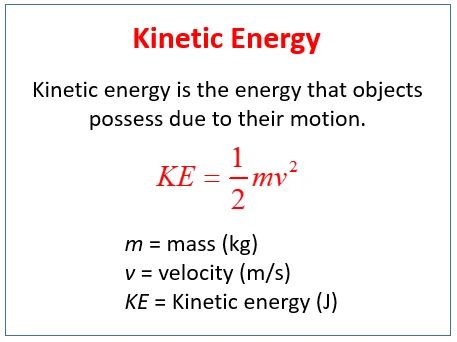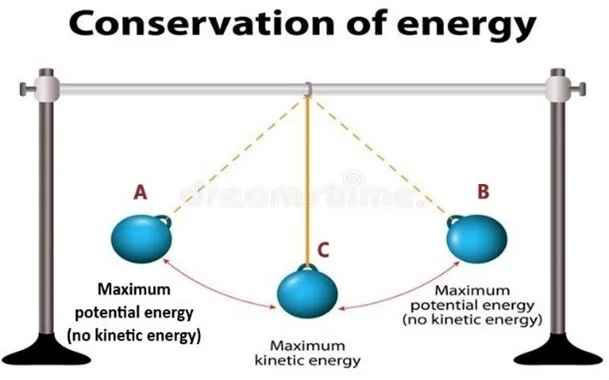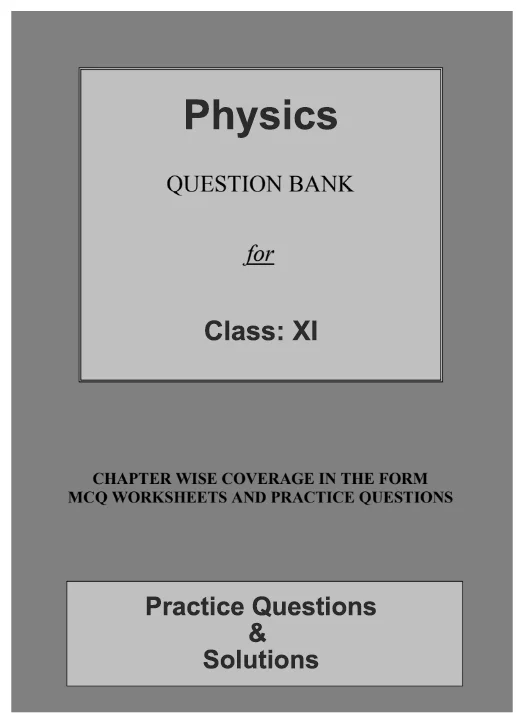We already discussed in the previous article (link here) that there is some relation between work done and energy. Now we will see the theorem that relates them. According to this theorem, the net work done on a body is equal to the change in kinetic energy of the body. This is known as Work-Energy Theorem. It can be represented as:

Harmony in Motion: Demystifying Notions of Work and Kinetic Energy with the Work-Energy Theorem.
Kf – Ki = W
Where Kf = Final kinetic energy
Ki = Initial kinetic energy
W = net work done
Work (W): In physics, work is done when a force is applied to an object, causing it to move a certain distance in the direction of the force.
Kinetic Energy (KE): This is the energy associated with the motion of an object. It depends on the object's mass and its velocity.
Mathematical Expression of Work:
The work done (W) is mathematically expressed as W=F⋅d⋅cos(θ), where F is the force applied, d is the displacement, and θ is the angle between the force and displacement vectors.
Kinetic Energy Formula:

Kinetic energy ( KE) is given by KE=12mv2 m is the mass of the object, and v is its velocity.
Statement of the Work-Energy Theorem:
The Work-Energy Theorem establishes a direct relationship between work done on an object and the change in its kinetic energy.
Mathematically, it is expressed as W=ΔKE, signifying that the net work done is equal to the change in kinetic energy.
Interpreting the Theorem:
Positive Work: When the net work is positive, it increases the kinetic energy of the object, resulting in acceleration.
Negative Work: Conversely, negative work decreases the kinetic energy, causing deceleration or bringing the object to a stop.
Applications in Real-world Scenarios:
Understanding the Work-Energy Theorem is crucial for analysing motion in various scenarios, including the trajectory of projectiles, the performance of vehicles, and the operation of machines.
Conservation of Energy:
The Work-Energy Theorem aligns with the principle of conservation of energy.

In a closed system with no external forces, the total mechanical energy (kinetic + potential) remains constant.
According to Work energy theorem,
Work done by all the forces = Change in Kinetic Energy
Wg + WN + Wf =Kf – Ki
Where Wg = work done by gravity
WN = work done by a normal force
Wf = work done by friction
Kf = final kinetic energy
Ki = initial kinetic energy

Download Physics notes
Work done by a constant force
A constant force will produce constant acceleration. Let the acceleration be ‘a’.
From the equation of motion,
v2 = u2 + 2as
2as = v2 – u2
Multiplying both sides with mass ‘m’ (ma).s = (mv2–mu2)2 F.s = (mv2–mu2)2 Comparing the above equation, we get, Work done by force (F) = F.s Where ‘s’ is the displacement of the body.
Work done by Non-Uniform Force
Now the equation,
W = F.ds
This is only valid when force remains constant throughout the displacement. Suppose we have a force represented below,

For these kinds of forces, we can assume that force remains constant for a very small displacement and then integrate that from the initial position to the final position.
W = ∫xf.xi f(x)dx
This is work done by a variable force. A graphical approach to this would be finding the area between F(x) and x from xi to xf.
CBSE Class 11th Downloadable Resources:
Being in CBSE class 11th and considering the board examinations you must be needing resources to excel in your examinations. At TestprepKart we take great pride in providing CBSE class 11th all study resources in downloadable form for you to keep you going.
Below is the list of all CBSE class 11th Downloads available on TestprepKart for both Indian and NRI students preparing for CBSE class 11th in UAE, Oman, Qatar, Kuwait & Bahrain.
SAMPLE PRACTICE QUESTIONS OF SIGNIFICANT FIGURES :
Q1. What is the Work-Energy Theorem?
Answer: The Work-Energy Theorem states that the work done on an object is equal to the change in its kinetic energy. Mathematically, it is expressed as W=ΔKE, where W is the work done, and ΔKE is the change in kinetic energy.
Q2. How is Work Defined in Physics?
Answer: In physics, work is defined as the product of the force applied to an object and the distance over which the force is applied. Mathematically, it is represented as W=F⋅d⋅cos(θ), where F is the force, d is the displacement, and θ is the angle between the force and displacement vectors.
Q3. What is Kinetic Energy?
Answer: Kinetic energy is the energy an object possesses due to its motion. The kinetic energy (KE) of an object is given by the formula 2KE=21mv2, where m is the mass of the object, and v is its velocity.
Q4. How Does the Work-Energy Theorem Relate to Kinetic Energy?
Answer: The Work-Energy Theorem states that the work done on an object is equal to the change in its kinetic energy. Essentially, the energy transferred to or from an object as a result of work manifests as a change in its kinetic energy.
Q5. What Happens if No Work is Done on an Object?
Answer: If no work is done on an object, according to the Work-Energy Theorem, there is no change in its kinetic energy. The object's velocity remains constant, and there is no acceleration.

Download Question Bank


Post a Comment